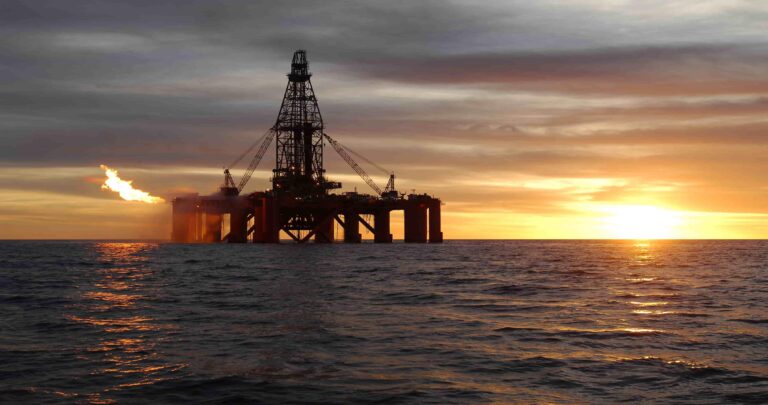Persistent Challenges in the Oil and Gas Industry Amid Rising Costs
The oil and gas sector is currently navigating a period of contraction, driven by mounting uncertainties in the global economic landscape and escalating operational expenditures. Recent insights from the Federal Reserve Bank of Dallas reveal that industry activity remains subdued, with minimal signs of rebound. Energy firms are increasingly burdened by surging costs related to workforce wages, equipment procurement, and stringent regulatory compliance, which collectively constrain capital allocation for exploration and development. This scenario has fostered a risk-averse mindset, leading to conservative operational strategies in drilling and production.
Key contributors to the sector’s ongoing slowdown include:
- Increased fuel and maintenance expenses affecting daily operational budgets
- Disruptions in supply chains causing delays in critical equipment availability
- Heightened regulatory requirements resulting in project postponements and elevated legal costs
- Fluctuating commodity prices diminishing incentives for new investments
| Indicator | Q2 2023 | Q1 2024 | Percentage Change |
|---|---|---|---|
| Number of Active Drilling Rigs | 450 | 410 | -8.9% |
| Operational Cost per Barrel ($) | 42 | 47 | +11.9% |
| Exploration Capital ($Billion) | 2.3 | 1.9 | -17.4% |
Investment Hesitation Amid Market Fluctuations and Geopolitical Tensions
The outlook for capital investment in the oil and gas industry remains cautious, shaped by unpredictable commodity price swings and ongoing geopolitical instability. Many operators are deferring or scaling back expansion initiatives to safeguard financial resources. This conservative approach stems from the difficulty in forecasting revenues and the amplified financial risks posed by volatile market dynamics.
Several pivotal elements influencing these investment decisions include:
- Escalating operational expenses such as labor and raw material costs, which compress profit margins.
- Uncertain regulatory landscapes, especially concerning environmental regulations and carbon reduction mandates.
- Variable demand projections driven by shifts in global economic conditions and changing energy consumption patterns.
These factors have collectively contributed to a marked reduction in capital expenditures, reflecting widespread reluctance to embark on new projects amid ongoing uncertainty.
| Influencing Factor | Effect on Investment |
|---|---|
| Commodity Price Volatility | Heightened risk, project delays |
| Labor and Material Inflation | Increased costs, squeezed margins |
| Regulatory Ambiguity | Uncertain project timelines, compliance expenses |
| Demand Fluctuations | Uncertain returns, conservative budgeting |
Inflation and Regulatory Constraints Impacting Production Efficiency
The decline in oil and gas production is closely linked to inflationary pressures that have driven operational costs to new highs. Companies face rising prices for essential inputs including materials, labor, and energy, complicating budget management and project scheduling. Moreover, increasingly rigorous environmental regulations have introduced complex compliance demands, further hampering operational efficiency. Even modest cost increases now have amplified effects across supply chains, compelling many operators to reassess project feasibility and prioritize investments carefully.
Industry experts identify several critical challenges exacerbating this downturn:
- Rising costs for drilling machinery and raw materials
- Extended permitting timelines delaying project commencements
- Intensified emissions oversight imposing operational limitations
- Labor shortages driving wage inflation and workforce constraints
| Challenge | Production Impact | Approximate Cost Increase |
|---|---|---|
| Material Costs | Project delays, lower throughput | 15% |
| Regulatory Compliance | Operational restrictions | 10% |
| Labor Expenses | Reduced labor availability | 12% |
Adaptive Strategies for Risk Management in the Energy Sector
In response to volatile oil prices and rising operational costs, energy companies are implementing dynamic financial strategies to sustain stability. Prominent among these are hedging via futures contracts to secure price certainty and broadening investment portfolios to include renewable energy and alternative assets. Enhanced market analytics tools are also being employed to improve forecasting accuracy, enabling quicker adaptation to sudden shifts in supply and demand.
Operational improvements are equally prioritized to reduce risk exposure. Industry leaders focus on cost containment through supply chain optimization and investing in cutting-edge extraction technologies that lower expenses and minimize environmental impact. The table below summarizes key risk mitigation practices alongside their principal advantages:
| Risk Mitigation Approach | Core Benefit |
|---|---|
| Hedging Techniques | Price Stability |
| Diversified Investment Portfolios | Lowered Exposure |
| Advanced Market Forecasting | Improved Predictive Accuracy |
| Cost Reduction Initiatives | Enhanced Operational Efficiency |
Conclusion: Outlook for the Oil and Gas Sector
As the oil and gas industry continues to face contraction amid rising costs and persistent market uncertainties, the Federal Reserve Bank of Dallas highlights the significant hurdles confronting the sector. Stakeholders will be closely observing how these dynamics unfold in the near term, given their profound implications for regional economies and the global energy landscape. Strategic adaptability and prudent risk management will be essential for navigating this challenging environment.







